Sometimes I get into discussions with people about dog structure and really, really, it makes me want to beat my head against a wall. However, those always make me publish those words and pictures that have been rattling around in my head for a while.
Case in point – someone posted on a board that they thought that a high toe on a dog was a “cosmetic fault.” My opinion on this is fairly solid – NO! A high toe is a STRUCTUAL fault. Someone then posted that they wanted “proof.”
Ah, here we go. The boondoggle of proof! Studies! Someone, somewhere, somehow agreeing or disagreeing with my point! The unfortunate thing is that it really isn’t to be found. Our Proof wanter found a website in which a couple had a Staffordshire Terrier with a high toe, and they readily admitted that the high toe caused issues with her gait, but then concluded that it was just a cosmetic issue. Hmm, really? The document can be found here, you can look at the pictures and read it for yourself. (Don't use the links in the document itself, it will take you to a BBQ place!)
I spent countless hours scouring the internet looking for information on high toes. I made phone calls to many different folks and discussed it with countless breeders. Why? I had a personal interest in it because I had a dog with a high toe that I was considering breeding. After studying many pedigrees I saw that once a dog has it, it stays in that dog's lines! This was serious to me - did I want to breed something that will impact another generation of dogs?
Since there was no research that I could find regarding high toe other than "it happens," I had to do my own looking and thinking. I began to talk to people about paw structure, looking at pictures of dog paws both skin on (dogs in real life) and skin off (anatomy books). I looked at pictures of dogs standing. I watched videos and studied pictures of dogs running and I came to a conclusion:
High toe is a serious structural fault.
Think about a dog's foot and how weight is distributed across the four toes and the pad. A dog stands on its toes, not on its back pad like a human stands on their heels. You have two toes in the front that are even - and two toes on either side that even with each other as well.
Case in point – someone posted on a board that they thought that a high toe on a dog was a “cosmetic fault.” My opinion on this is fairly solid – NO! A high toe is a STRUCTUAL fault. Someone then posted that they wanted “proof.”
Ah, here we go. The boondoggle of proof! Studies! Someone, somewhere, somehow agreeing or disagreeing with my point! The unfortunate thing is that it really isn’t to be found. Our Proof wanter found a website in which a couple had a Staffordshire Terrier with a high toe, and they readily admitted that the high toe caused issues with her gait, but then concluded that it was just a cosmetic issue. Hmm, really? The document can be found here, you can look at the pictures and read it for yourself. (Don't use the links in the document itself, it will take you to a BBQ place!)
I spent countless hours scouring the internet looking for information on high toes. I made phone calls to many different folks and discussed it with countless breeders. Why? I had a personal interest in it because I had a dog with a high toe that I was considering breeding. After studying many pedigrees I saw that once a dog has it, it stays in that dog's lines! This was serious to me - did I want to breed something that will impact another generation of dogs?
Since there was no research that I could find regarding high toe other than "it happens," I had to do my own looking and thinking. I began to talk to people about paw structure, looking at pictures of dog paws both skin on (dogs in real life) and skin off (anatomy books). I looked at pictures of dogs standing. I watched videos and studied pictures of dogs running and I came to a conclusion:
High toe is a serious structural fault.
Think about a dog's foot and how weight is distributed across the four toes and the pad. A dog stands on its toes, not on its back pad like a human stands on their heels. You have two toes in the front that are even - and two toes on either side that even with each other as well.
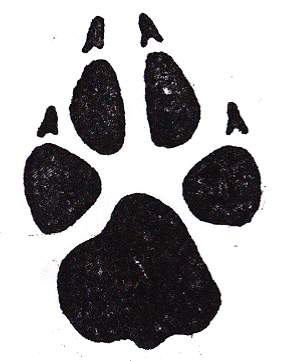
Take away the outside toe. What happens to the weight distribution? It goes from evenly across the two front toes to the inside middle toe taking most of the weight of the foot.
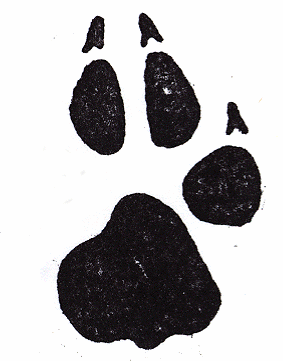
When a dog runs, it lands on the pad, then rolls to the toes to take off again.
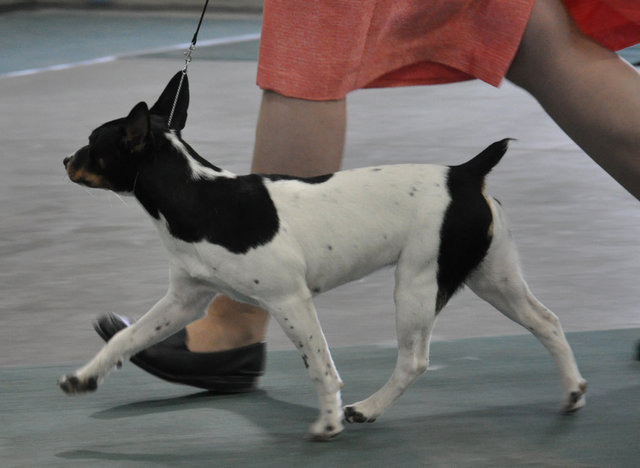
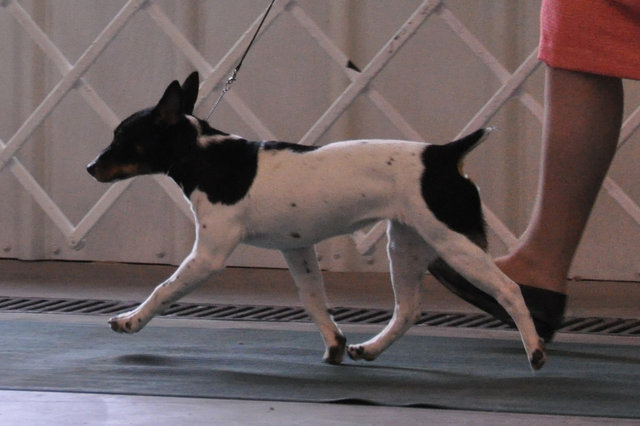
When two front toes grab first with the outside toes second, you have the front of the leg giving most of the support to the leg and that last bit of power to shove off. When you land with 3 toes, your landing is unstable - you depend on that outside center toe to take the stage as both stabilizer to keep that foot straight as well as a power off point. If there is a missing toe, it will weaken the overall movement of the animal.
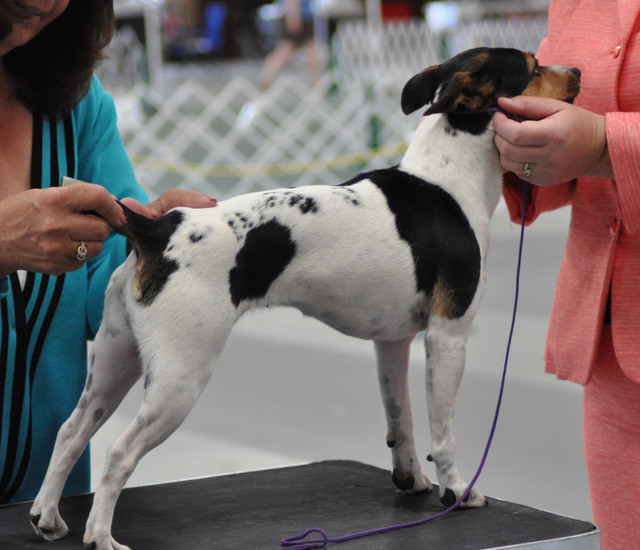
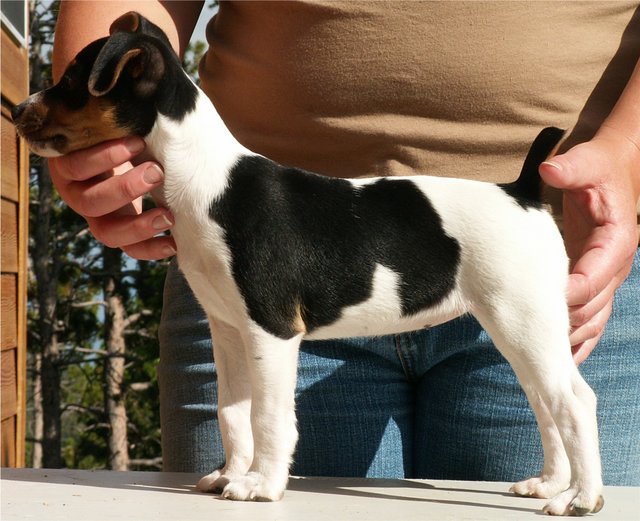
Comparing the two photos, can you think of a dog continually standing and moving and compensating for a high toe? The paw automatically rolls to the inside of the dog, putting stress on their wrists and pasterns that wouldn't otherwise be there if they had all four toes on the ground.
Take a look at the bones of a dog's paw:

I wish I knew how to use Photoshop so that I could move the outside toes upwards and shorten those bones, but you will just have to use your imagination.
By looking at the pictures above, one can see that anything that affects weight distribution in a foot goes right up the leg - first to the wrists, then the pasterns, etc. - it is a domino effect!
If it is a structual defect, it affects working ability.
"The dog's structure serves a purpose; if that structure is too weak or improper to live up to its purpose, it is more likely to break down." - Pat Hastings, Author, Breeder & Judge
A high toe is a weakness of the paw and can contribute to the overall weakness of a dog - and it is something that we should actively attempt to eradicate from our breed.
Hi I have a 6 month old Parson Russell Terrier with high toes on the outside of both front paws. Is this a breeding problem or just from birth?
ReplyDeleteI have a PRT too. He's almost six years old and with high toes on both front paws. It is a hereditary condition, so it is a breeding problem. As far as I know, my PRT was the only one in that litter (1/6) to develop high toes.
DeleteI have a Boston Terrier puppy I acquired I didn't notice it when I bought the dog now he is 6 months you can see the high toes on both feet, the foot itself is breaking down and weakens pasterns and when standing he is east to west with his front legs. He does not move nicely like he did I would post pictures here but can't find how to do it.
ReplyDeleteMy Parson russell terrier had high toe on both of her front paws aswell as her brother
ReplyDeleteHi, did anyone knows Something about the lines of these dogs, in Parson Jack Russell Terrier
ReplyDeleteMy Parson Russell Terrier has high toes. The breeder told me that I could return the dog but I didn’t notice it until he was 6 months old and he was part of the family and we were not giving him back. Now he is 5 years old. He seems to be fine so far. Jumping off of things seems to be harder, I think he is conscious of the way he lands as he only has 3 paws. We had him fixed and will not be breeding him for this reason.
ReplyDelete